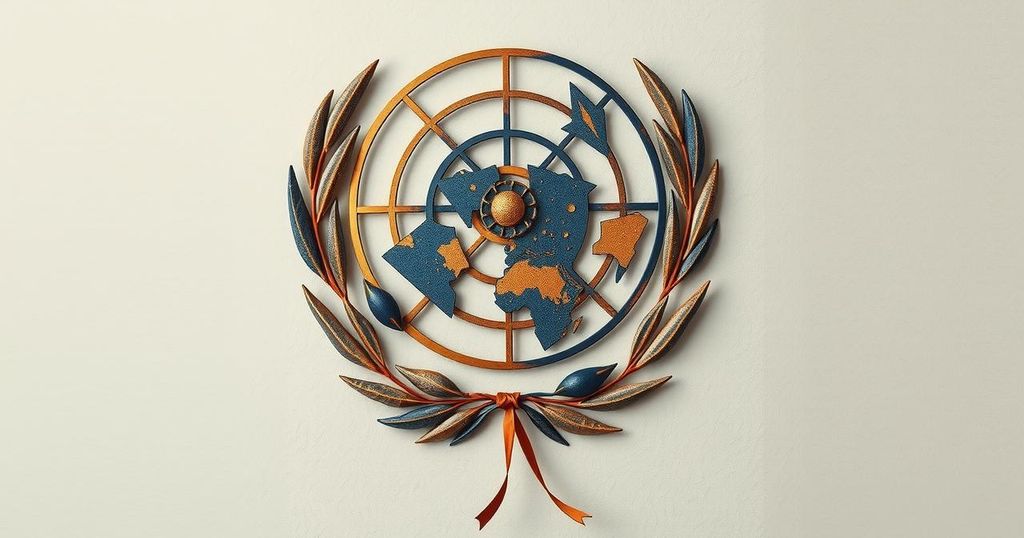The Syrian conflict, initiated by protests in 2011 against Bashar al-Assad’s regime, escalated into a civil war marked by violent repression, the involvement of international actors, and the use of chemical weapons. Despite initial challenges, Assad maintained power with the help of allies like Russia and Iran. By 2024, however, his support diminished significantly, leading to rapid territorial losses to rebel forces, including in Damascus.
Beginning in March 2011, Bashar al-Assad faced growing challenges to his authority as anti-government protests erupted throughout Syria, inspired by the broader Middle Eastern unrest known as the Arab Spring. In response, although Assad proposed various concessions, including cabinet reshuffles and the potential repeal of strict emergency laws, these measures were overshadowed by increasing violence from security forces against demonstrators, provoking significant international criticism.
As protests intensified and spread, the government employed military force to suppress dissent. Assad claimed that the unrest was the result of an international conspiracy aimed at inciting sectarian conflict. By September 2011, armed opposition factions started organizing effectively, leading to a civil war that escalated further, especially following the assassination of several high-ranking officials in July 2012 by a bomb blast.
Amid a deteriorating security situation, Assad rarely appeared in public and relied on staged appearances to bolster support. International interventions by countries such as Turkey and Saudi Arabia aimed to bolster rebel forces, while Assad received military assistance from Iran and Hezbollah, including their fighters in the conflict beginning in late 2012.
The situation escalated dramatically in August 2013, when alleged chemical weapons attacks in Damascus suburbs killed hundreds. Western leaders accused Assad’s regime of responsibility, but he denied using chemical weapons, attributing any attacks to rebel forces. This led to international discussions regarding military intervention, which were ultimately averted through negotiations, resulting in Assad agreeing to surrender his chemical arsenal.
Despite the withdrawal of chemical weapon usage, Assad’s forces utilized indiscriminate bombings, including barrel bombs, which prompted further outrage from human rights organizations. Over time, Assad’s position seemed to stabilize as he effectively contained rebel forces, especially following the rise of ISIS, prompting some former opponents to reconsider their positions regarding his removal.
With Russian military intervention in 2015, Assad’s regime gained significant ground, regaining control over major territories by late 2017. By mid-2018, remaining insurgents were isolated, particularly in Idlib, where Assad refrained from immediate military engagement. He initiated reconstruction efforts to revitalize Syria’s infrastructure and economy, promoting property laws that garnered widespread criticism due to their potential disenfranchisement of displaced citizens.
In 2024, Assad’s regime faced an existential crisis as international support waned. Russia’s military capacity was diminished due to its ongoing conflict in Ukraine, while Hezbollah withdrew its forces amidst pressure from Israel. In a swift turn of events, HTS launched a successful offensive, leading to the capture of major cities and isolating Damascus, reportedly forcing Assad to flee the capital.
The Syrian Civil War, beginning in 2011, emerged from widespread protests against the authoritarian regime of Bashar al-Assad, influenced by the Arab Spring movements across the Arab world. The conflict has evolved into a complex and multifaceted war involving various domestic and international actors, raising critical concerns about human rights violations and geopolitical stability in the region. The persistent violence and shifting alliances have created a humanitarian crisis, challenging the international community’s response and intervention strategies.
The Syrian conflict remains an illustrative example of the devastating effects of authoritarian rule, foreign intervention, and civil unrest. Despite efforts at international mediation and military interventions, the humanitarian crisis continues, exacerbated by governmental policies perceived as repressive. As the situation evolves, the enduring implications of Assad’s leadership illustrate the complex interplay of regional politics and the enduring struggle for democratic governance.
Original Source: www.britannica.com






